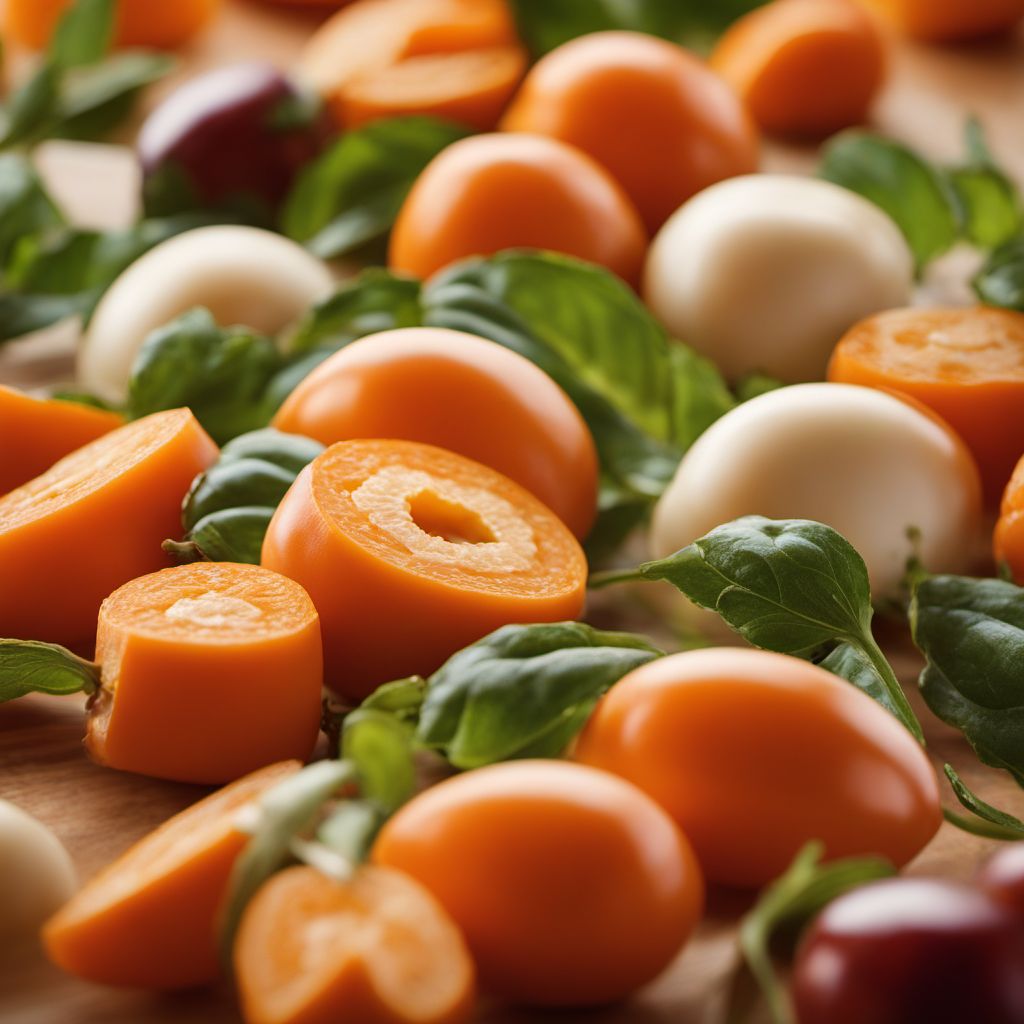
Ingredient
Carotenoids
The Colorful World of Carotenoids
Carotenoids are natural pigments that give fruits and vegetables their vibrant red, orange, and yellow colors. They are fat-soluble compounds that play a crucial role in plant photosynthesis and act as antioxidants in the human body. Carotenoids have a diverse range of flavors, from sweet and fruity to earthy and bitter, depending on the specific compound.
Origins and history
Carotenoids are found in various plant-based foods and are synthesized by plants and algae. They have been a part of human diets for thousands of years. Ancient civilizations, such as the Egyptians and the Mayans, used carotenoid-rich foods for both culinary and medicinal purposes. Carotenoids were also used as natural dyes for textiles and artwork.
Nutritional information
Carotenoids are known for their antioxidant properties and are associated with numerous health benefits. They help protect against oxidative stress, support eye health, boost the immune system, and may reduce the risk of certain chronic diseases. Additionally, carotenoids are fat-soluble, meaning they are better absorbed when consumed with a source of fat.
Allergens
There are no known allergens specifically associated with carotenoids. However, some individuals may be allergic to certain foods that are rich in carotenoids, such as carrots or tomatoes.
How to select
When selecting carotenoid-rich foods, look for vibrant colors and firm textures. Choose fruits and vegetables that are free from bruises, blemishes, or signs of decay. Opt for organic produce whenever possible to minimize exposure to pesticides.
Storage recommendations
To maintain the freshness and quality of carotenoid-rich foods, store them in a cool, dry place away from direct sunlight. Some carotenoids are sensitive to heat and light, so it's best to store them in airtight containers or in the refrigerator. Additionally, avoid cutting or peeling carotenoid-rich foods until ready to use, as exposure to air can lead to nutrient loss.
How to produce
Carotenoids are naturally produced by plants and algae through photosynthesis. To produce carotenoid-rich foods at home, consider growing your own fruits and vegetables in a garden or in pots. Provide adequate sunlight, water, and nutrients to support healthy plant growth and carotenoid synthesis.
Preparation tips
Carotenoids can be prepared and used in various ways depending on the specific food. For example, carrots can be eaten raw, juiced, or cooked in dishes such as soups, stews, or stir-fries. Tomatoes can be used in salads, sauces, or roasted for a concentrated flavor. Leafy greens like kale or spinach can be sautéed, steamed, or added to smoothies. Experiment with different cooking techniques to find your preferred preparation method.
Culinary uses
Carotenoids are commonly used in a wide range of culinary applications. They are used to add vibrant colors, flavors, and nutritional value to dishes. Carrots, tomatoes, bell peppers, and sweet potatoes are often used in salads, soups, stews, sauces, and various cooked preparations. Leafy greens like kale and spinach are popular in salads, smoothies, and cooked dishes. Carotenoids are also used as natural food colorings in the food industry.
Availability
Carotenoid-rich foods are commonly available in most regions and countries around the world. They are cultivated in various climates and can be found in grocery stores, supermarkets, farmers markets, and even home gardens.

